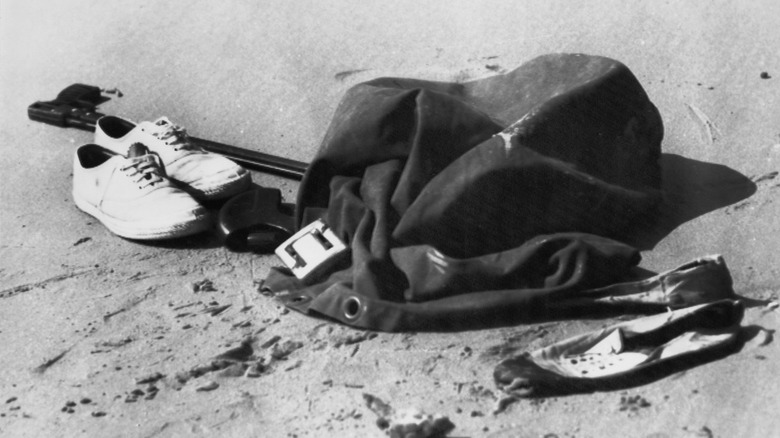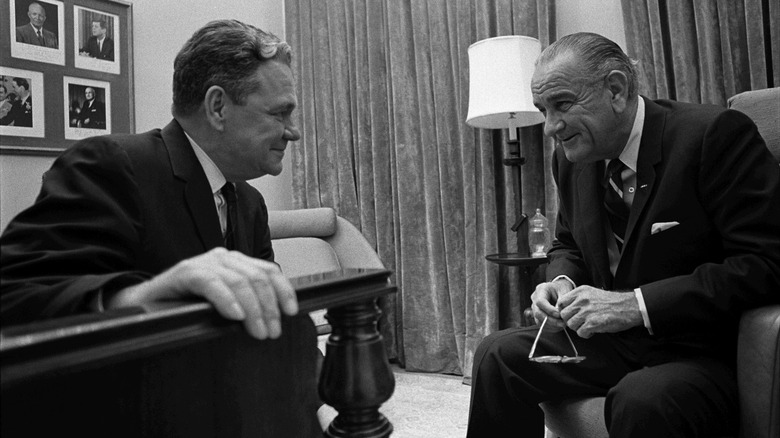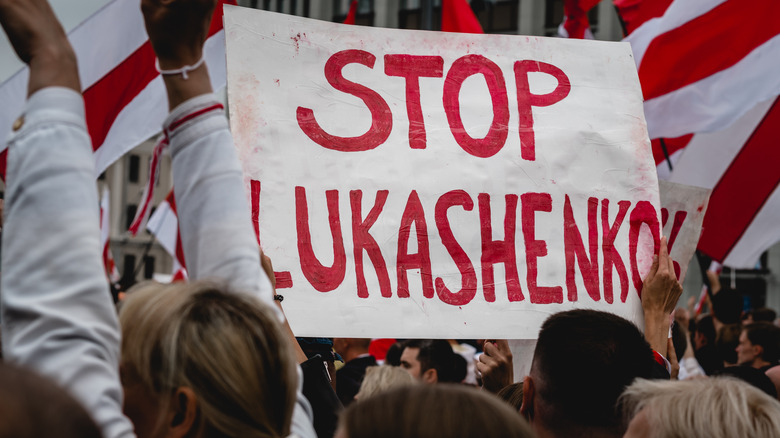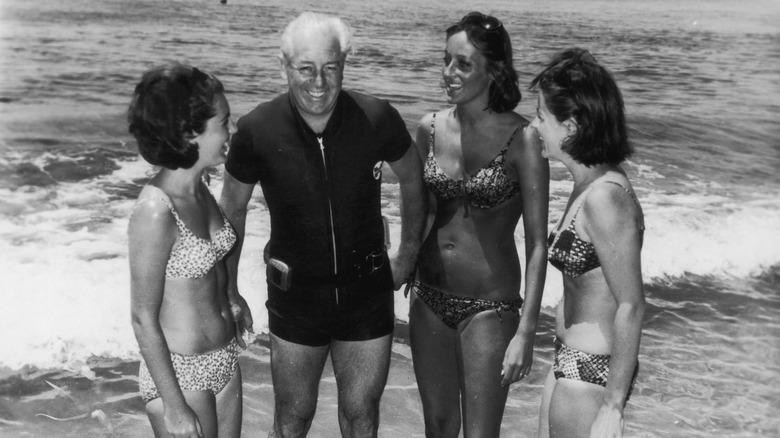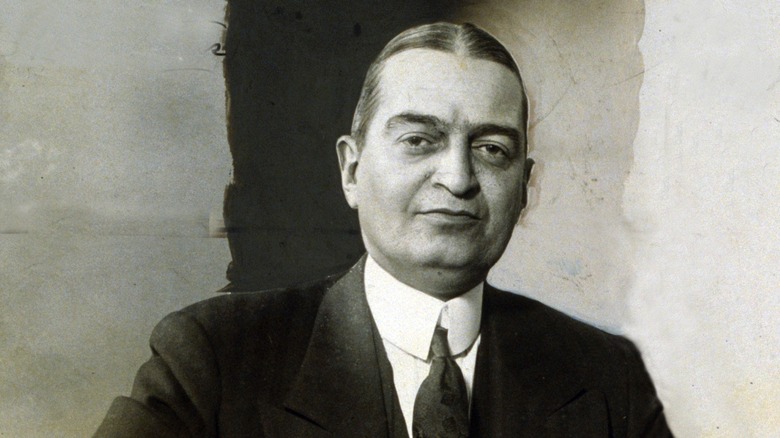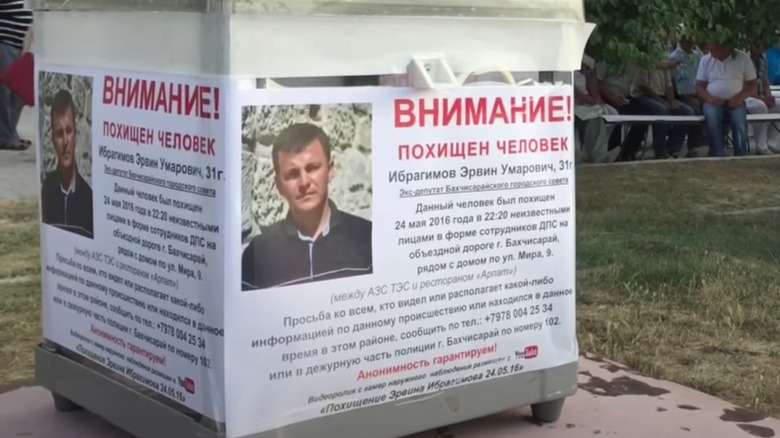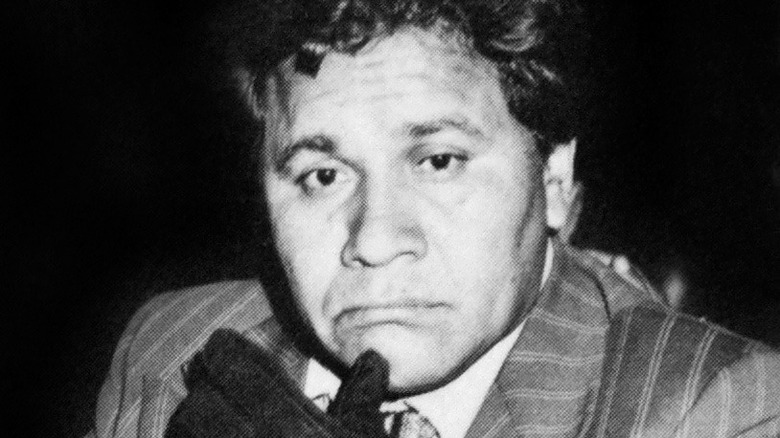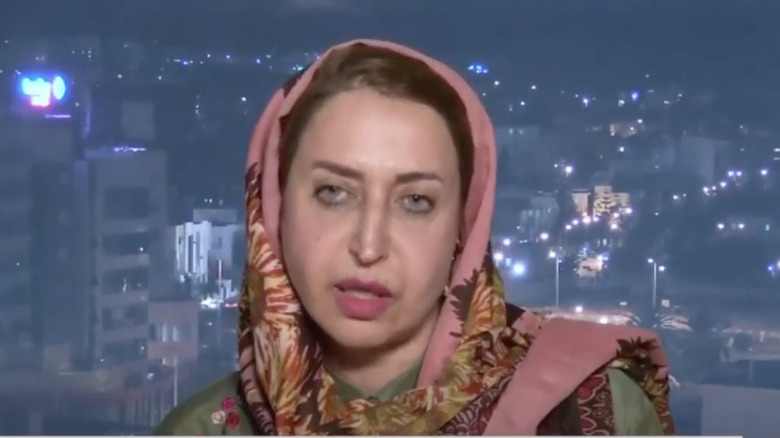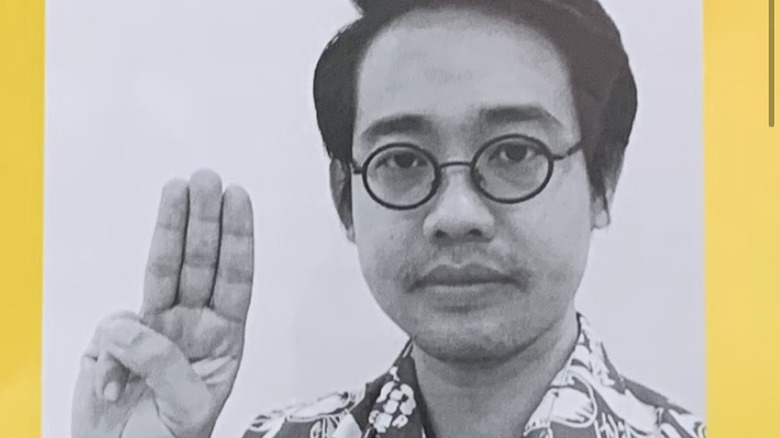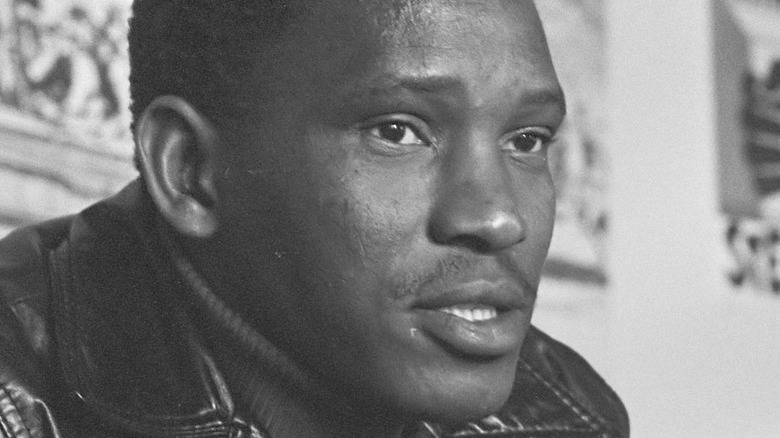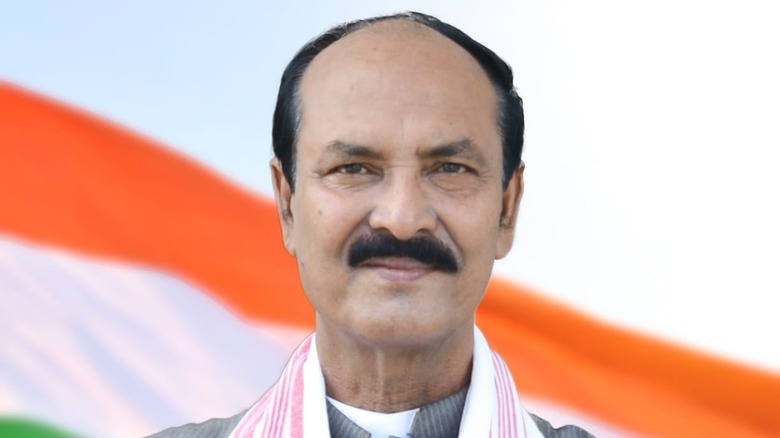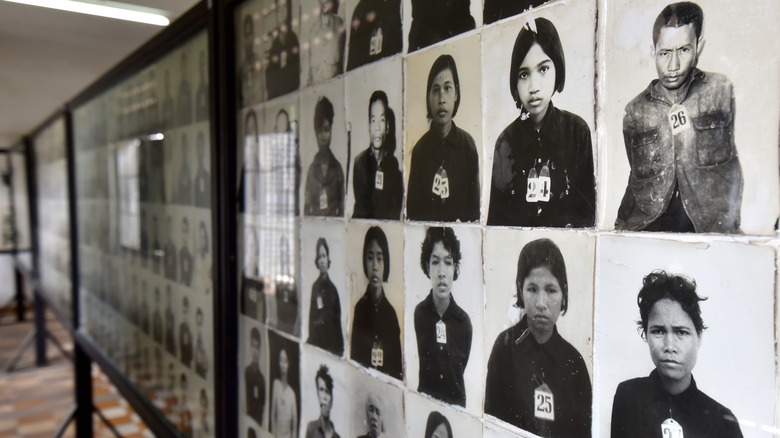Politicians Who Are Still Missing Today
It ain't easy being the boss, they say, or standing up for civil liberties in the face of dictators and institutionalized prejudice. It's probably not so easy going missing while doing those government honey-dos either. And all because someone on the other side never took a high school debate class and just had to jump to kidnapping their opponent instead of crafting a well-rounded rebuttal to impress all their friends.
So when a politician, or a person actively involved in politics, disappears, it's easy to immediately imagine the worst possible scenario where corruption prevails and murderous boats full of cocaine are unequivocally involved. Well, maybe not the latter for all of them, but at least one was probably the case. And the thing is, there's plenty of politically charged brutishness happening everyday in the name of absolute power.
But somehow, the miraculous phenomenon always arises when a highly surveilled, outspoken individual goes missing, and government officials simply shrug their shoulders and retreat from throwing together an investigation. And they think that doesn't make us more suspicious, or maybe they don't care since nobody can do anything about bringing justice to dictators and lawmakers anyway. Not always though, because sometimes Mother Nature gets the best of even powerful leaders and just drowns them and takes the bodies for herself.
Thomas Hale Boggs and Nick Begich went for their last flight
In the case of these two missing congressmen, the questions around their disappearance are less of a matter of what happened rather than where it happened. Per Politico, the lawmakers in question were freshman Democratic representative Nick Begich and loud-mouthed Majority Leader Thomas Hale Boggs, who were out on a fundraising campaign in Alaska for Begich in 1972. After taking off from Anchorage in super questionable weather, the plane never made it to its destination in Juneau. More than likely, the petite two-engined Cessna crashed either in the Gulf of Alaska or in the deep powder of the Chugach Mountains behind Anchorage. But even with the largest rescue mission in United States history at the time, which involved 90 aircraft that searched for over a month, the wreckage was never found, according to Missing Veterans.
Unsurprisingly, the conspiracy theories came quickly, especially since Boggs was such a hot shot at the time and having a tussle with J. Edgar Hoover over having his phone bugged by the FBI, per the New York Times. Boggs was also on the Warren Commission for the John F. Kennedy assassination, and he didn't buy into the report that the president was killed by one man. Some believed Boggs was killed in the plane crash to shut him up. And just a random fact to throw into the mix that might disprove any ill will towards the congressman — both Boggs and Begich were reelected to the House of Representatives after they were presumed dead, according to The Washington Post.
Viktar Hanchar's busted Jeep and blood spatter was the last of him
Viktar Hanchar's disappearance definitely smells like dirty political scheming, especially due to his high status in the Belarus government. Hanchar wore plenty of hats during his largely successful political career that started in the 1990s, including prime minister of Belarus and chairman of the Central Commission for Elections, per Euromaiden Press. Hanchar blocked President Alexander Lukashenko from amending the constitution to elongate his presidential term and access to executive power. And since Hanchar had previously worked for Lukashenko's campaign in 1994, notes World Heritage Encyclopedia, it really, really rubbed the president the wrong way. So, he fired Hanchar from his position, and Hanchar went on to form a protest election committee during the 1999 election against Lukashenko and his dictator-like reforms.
It seemed a little coincidental when Hanchar went missing in September of 1999 in Minsk with his business partner Anatoly Krasovsky, who helped finance the opposition against Lukashenko. The two had gone to a bathhouse that night and reportedly crashed Hanchar's Jeep Cherokee shortly after leaving. Hanchar's blood was found at the scene, and it was pretty obvious that the men had been abducted, according to Civil Initiative We Remember. And because an investigation didn't begin until a few years after they went missing, it didn't exactly keep people from surmising that it was most likely due to the high level operatives of Lukashenko, according to Euro Belarus.
Harold Holt went Down Under ... in Down Under
Harold Holt became the prime minister of Australia just less than two years before his disappearance in 1967. The matter in which he went missing isn't really a mystery, but his body was never found after taking an ocean swim. Holt vanished into Australian waters on December 17 after he and a group of friends had gone for a Sunday stroll along the superbly scenic sands of Portsea Victoria, per Smithsonian Magazine. While the others stayed on land, Holt swam farther and farther out into the Bass Strait, despite feeling the authoritative undercurrent pulling off the beach — or the fact that he'd recently had shoulder surgery, per CNN . Within an hour, the largest search and rescue mission was underway in the country's history. Two days later, the newly appointed, 59-year-old prime minister was declared dead.
Although his disappearance seems impeccably understandable, the Aussie people needed a better story than just a straightforward drowning. According to a police record (via CNN) from one of the friends who watched Holt vanish that day, "she saw the water become very turbulent around him very suddenly and appeared to boil and these conditions seemed to 'swamp on him.'" This naturally struck up imaginative conspiracies, one which seemed to spur out of Holt's work to accept Asian immigrants into a very-segregated Australia at the time. Anthony Grey, a British journalist for Reuters, published "The Prime Minister Was a Spy" in 1983, which deduced that Holt was a Chinese spy and boarded a submarine after he finished a mission for the Communist government.
Joseph Force Crater never made it on Broadway
It was an August evening in 1930 when a New York supreme justice hailed a cab outside a chophouse to attend a Broadway show. He was dressed to the nines in a brown suit topped with a panama hat, per usual, and had just had dinner and drinks with a lawyer pal and a show girl, per The New York Times. This seemed like a typical night for Joseph Force Crater, but earlier that day he was obviously in something of a pickle as he destroyed and rearranged a few legal documents, as well as requested large withdrawals from his bank that are equivalent to more than $79,000 in 2021. One might inquire if Crater was preparing to run, from what it's not known, since he disappeared that night after hopping into a taxi.
Crater was a member of the prominent, and oftentimes shady, New York political organization known as The Tammany Club, to which his dealings with maybe had a little something to do with his whereabouts, according to History. Crater was suspiciously elected to the Supreme Court by Franklin D. Roosevelt only four months after becoming a judge, according to the Los Angeles Times. Naturally, this came as a surprise to the powers of Tammany Hall who already had their well-experienced pick ready to go. Things started to get even more interesting when information started to circulate that Crater knew about some guys buying seats on the bench from Tammany, and that's when he started to burn some papers around his office the day of his imminent disappearance, per the Observer.
Ervin Ibragimov was kidnapped from his car, on camera
In July 2016, Ervin Ibragimov was stopped in the middle of the road and pulled from his vehicle and into another by men dressed in police getup. The abducted 30-year-old was a member of the Bakhchysarai Municipal Council and a senior specialist for interethnic relations at the Bakhchysarai City Administration in Crimea, as per Radio Free Europe, where Russia now occupies the annexed nation from Ukraine, per the Crimean Tatar Resource Center. Ibragimov had been outspoken about Russia's occupation in Crimea, in that the Russians needed to leave and/or stop persecuting innocent people for merely existing in the newly annexed nation. His statements evidently didn't go unnoticed by Russian officials.
Before the incident on the bypass near his home, Ibragimov had been warned about voicing his opinions of Crimean rights and was followed on occasion, according to European Parliament. Despite the surveillance footage and his father having the license plate number of the vehicle that took off with his son, his disappearance has yet to be investigated with evident intent by the Investigative Committee of the Russian Federation for the Republic of Crimea. Which unfortunately doesn't seem to come as much of a surprise considering the premise of Ibragimov's troubles.
Oscar Zeta Acosta Fierro left a in flurry of white, supposedly
For those who are familiar with "Fear and Loathing in Las Vegas," the outrageous Samoan lawyer known as Dr. Gonzo will make Oscar Acosta very familiar. Like the character he inspired, Acosta was a fiery outspoken lawyer but also a political activist and imaginative writer, per the Los Angeles Times. In the late '60s, Acosta became involved with the Chicano Civil Rights movement in Los Angeles shortly after law school to represent his fellow Chicano activists. Around that time he met the founder of gonzo journalism Hunter S. Thompson. Their infamous Vegas trip that Thompson would later retell in scribe wouldn't be until a few years later.
Acosta was addicted to psychedelics and amphetamines, notes Readers Digest, likely due to his battles with mental illness, leading to his insatiable party habits that made he and Thompson well-known, per PBS. He wrote a couple books himself in the early 70s, including "The Revolt of the Cockroach People," which didn't do as well as his first novel, "The Autobiography of a Brown Buffalo." When it started to look like his new book was a dud, and his second marriage was falling apart, the party animal took off to Mazatlan, Mexico, in May of 1974, per Associated Press. The last person who heard from him was his son, who said he was "about to board a boat full of white snow." It was assumed the folks he joined for a cocaine float killed him — but given his wild temperament not without a fight.
Seham Sergiwa spoke out against violence in Libya
Seham Sergiwa was a member of the Libyan parliament who was forcibly kidnapped from her home in Benghazi in 2019. The night prior on national television, she denounced the commander of the Libya National Army (LNA) for his military campaign in Tripoli, per Amnesty International. The following day, the gunmen who raided her home were presumably sent by the commander she criticized, Khalifa Haftar. The abductors shot her husband in the leg and beat her son as they violently detained Sergiwa in front of them. She was never seen again, and it's presumed by sources and her family that she was executed the same day, according to the Middle East Eye.
Benghazi's interior ministry sent out a statement that Hatftar and the LNA had nothing to do with Sergiwa's kidnapping, which seems like a logical go-to for anyone who's been accused of a malicious crime they don't want to deal with. But her family strongly believes otherwise due to the signage that was spray painted outside of their home that translates to "don't cross the line of the army" (via The Independent). According to Reuters, Sergiwa is one of many political women who have been targeted, killed, and kidnapped in Libya, and some believe her forced disappearance may have connotations to keeping women out of the nation's government.
Wanchalearm Satsaksit was very publicly kidnapped
Wanchalearm Satsaksit was a widely popular satirist and democracy activist of Thailand who loudly criticized the government for their restrictions around homosexuality and gender rights. His topics of contention grew with his following as he joined the United Front for Democracy Against Dictatorship to fight against perpetual military coups against democracy-intentioned prime ministers, per BBC. In 2014, after another coup and subsequently a large and angry protest, Satsaksit was not so subtly summoned to a meeting at a military base. He politely declined by fleeing to Cambodia and living in exile until his very public abduction in June 2020.
The day prior to the incident, he ridiculed the army chief-turned-prime minister Prayuth Chan-ocha in a Facebook video after officials had paid his mother a visit to ask her questions about him, per the Los Angeles Times. The next day, when he was in the middle of talking to his sister on the phone and buying meatballs, a Toyota Highlander stopped, and a number of armed men bundled and inserted Satsaksit into the vehicle. As he screamed for help, bystanders approaching the gunmen were told to stay back before the gunmen drove away. Still on the line, his sister heard her brother repeatedly say he couldn't breathe, and after 30 minutes the call ended, per BBC. Satsaksit is believed to have been targeted in the collaboration of Asia's dictatorships seeking and extracting their exiles. His sister and fellow activists have sought justice, only to be told by the Thai government that they had no involvement, and investigations have come up empty, despite clear video footage and eyewitness reports.
Brendan Simbwaye lived in exile after exile
Brendan Simbwaye was a prominent anti-segregation activist in Namibia and president of the Caprivi African National Union (CANU) political party. He went missing in 1972 while visiting with a U.N. representative Alfred Fischer, according to Re-reviewing Resistance in Namibia History. Originally he was a teacher before he became the founder of the Caprivi African National Union that sought to move the people of Namibia towards independence from South Africa. The political movement remained secret during its origins in 1962 and was deemed an illegal organization after its first public meeting in 1964, since government officials had repeatedly refused to grant them permission to congregate, according to the University of Namibia.
Simbwaye was imprisoned for a couple of months for holding the meeting along with leaving the country without permission as he did travel to Zambia to seek help with getting CANU up and running. So officials were probably pretty salty about that as well. After being released, Simbwaye continued a life of perpetual exile thereafter. CANU merged with South West Africa People's Organization to which Simbwaye became the vice president, per Re-reviewing Resistance in Namibia History. The organization had just as many troubles with government pushback as CANU, and Simbwaye was shortly banished from Caprivi after attempting to hold another public meeting that had been deemed illegal. It has been presumed that he was killed by the South African security forces when he was finally granted permission to visit his home in Caprivi, although his body was never recovered
Ilias Ali allegedly yelled at a guy, and that was it for him
Ilias Ali was a Bangladeshi lawmaker and secretary of the Bangladesh Nationalist Party (BNP) who went missing along with his driver in April 2012. According to the United News of Bangladesh, some believed Ali was detained by law enforcement who denied any involvement with him vanishing. There was also speculation that the opposing party, the Awami League, possibly had something to do with Ali's disappearance. However, in April, a standing committee member of the BNP said during a party meeting that Ali was not taken by outside institutions but from his own party members, according to The Daily Observer.
The committee member, Mirza Abbas, said the night before Ali went missing, he had an unpleasant exchanging of words with a fellow party member, alluding that this may have led to his disappearance in some way. Abbas said in the meeting, "I got the information around 2:30am on that night when Ilias disappeared. I immediately contacted the officials I knew, and they informed me that he (Ilias) was being taken to Chattogram," as per The Daily Star. Abbas also claimed that those involved with Ali's disappearance are still working within the BNP, and if they are not removed, they will not move forward. For what reason Ali would be possibly kidnapped and detained by his own party members is still totally unclear.
Norodom Kantol served Cambodia before one of its craziest dictators
Norodom Kantol served as the prime minister of Cambodia from 1962 to 1966, as well as the foreign minister for his cousin Norodom Sihanouk — a wiley and charismatic leader that was ousted during the Vietnam War in 1970, per History. Meanwhile, an extreme communist regime known as the Khmer Rouge had been burgeoning years before and now had a fabulous opportunity to become pals with Shanouk since he was still popular with urban folks of Cambodia — and the party needed to build upon their support for a national takeover.
A civil war expectedly ensued for five years between the Cambodian military that mutinied against Sihanouk and the Khmer Rouge supporters. In the meantime of national unrest, the Khmer Rouge imprisoned the royal family, including Kantol, who went missing in 1976 after the party's infamously evil leader, Pol Pot, took up the throne. He is presumed to have been killed by the new regime of Cambodia, who went on to kickstart genocide, slavery, and starvation of its own people until 1979 when Vietnam stepped in to help Cambodians remove the self-appointed dictator and his cronies, according to BBC.
